THIRST is a site-specific installation featuring a 38-foot tall drought-killed tree anchored in the center of the Lady Bird Lake in Austin. THIRST memorializes the loss of the over 500 million trees that died in Texas droughts between 2011-2013, and acknowledges the devastating impact of climate change. THIRST was the subject of a 2013 PBS Arts in Context documentary, and reviewed by The New York Times, The Huffington Post, Climate Progress, Public Art Review, and Art Works Blog at the National Endowment of the Arts.THIRST is a collaboration between W&TW, Beili Liu (lead visual artist), Norma Yancey and Emily Little (architects) and Cassie Bergstrom (landscape architect). THIRST was on view from September 28th to December 16th, 2013.
THIRST was support in part by a 2013 Robert Rauschenberg Artistic Innovation and Collaboration Grant.
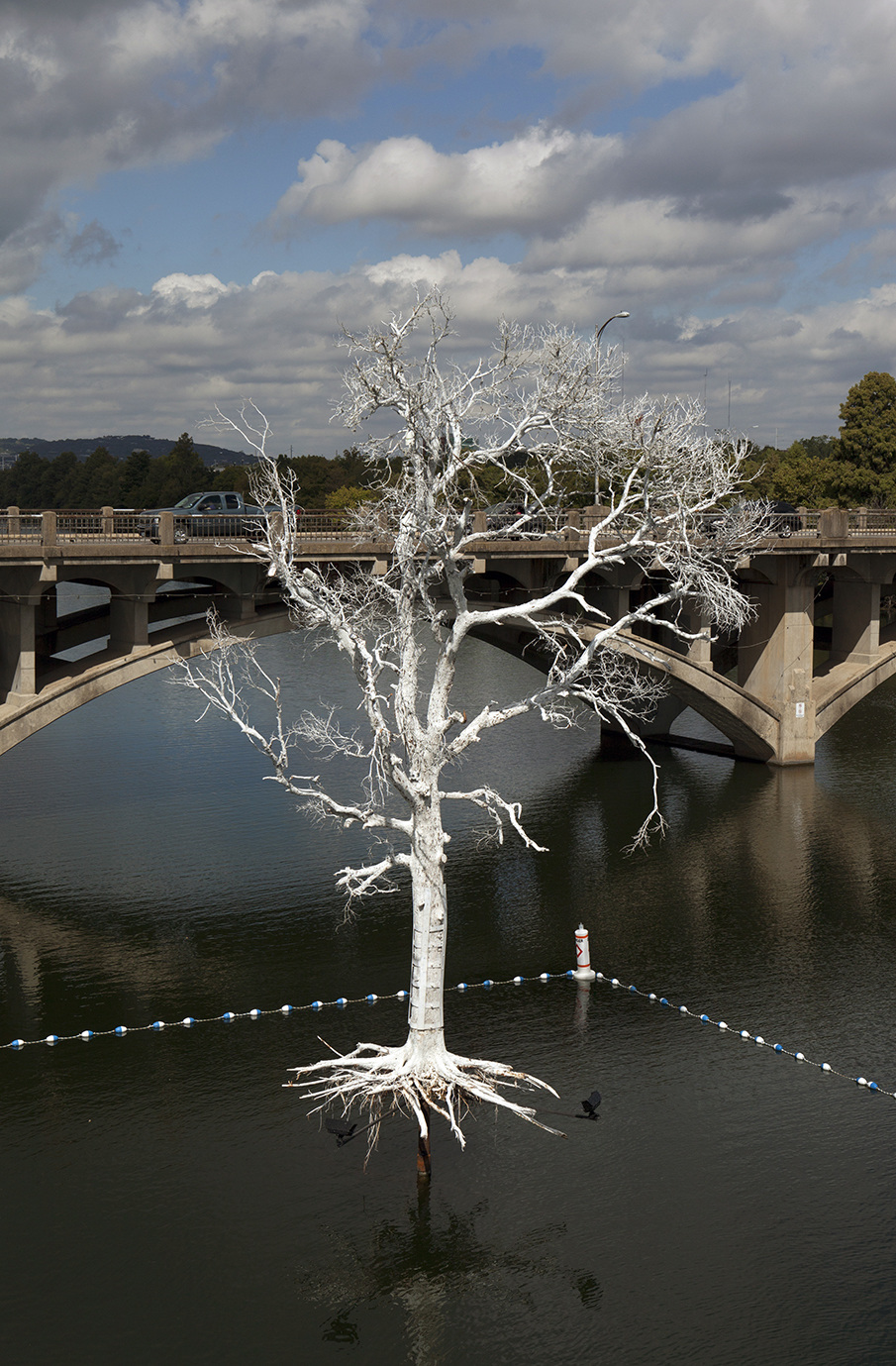
The iconic, drought-killed tree embodies the enormous loss of the hundreds of millions of trees in Texas. With its root reaching but not touching the water, the tree visualizes life’s dependency on water.
Installation view looking toward Lamar Bridge, Austin Texas
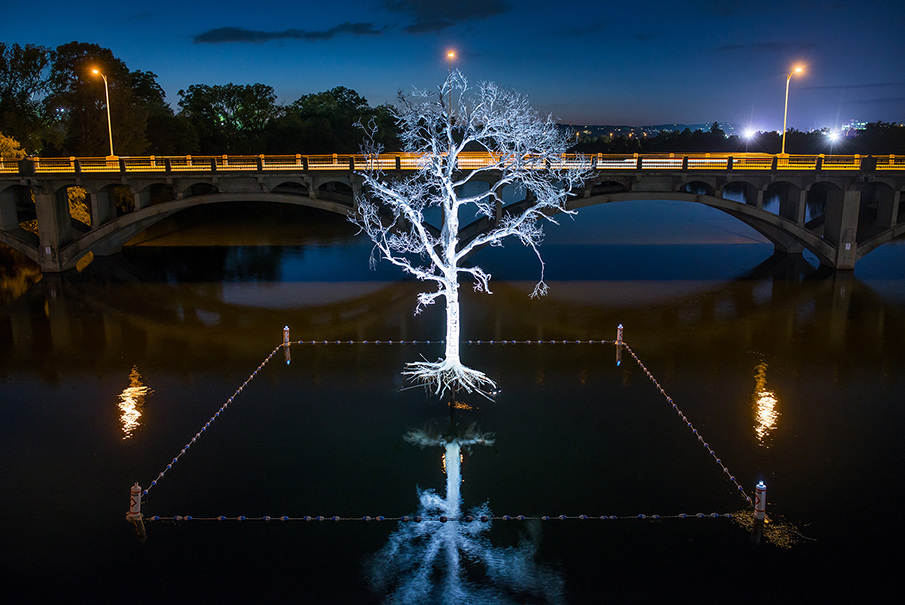
The THIRST Tree illuminated at night, photo by Tod Grubbs
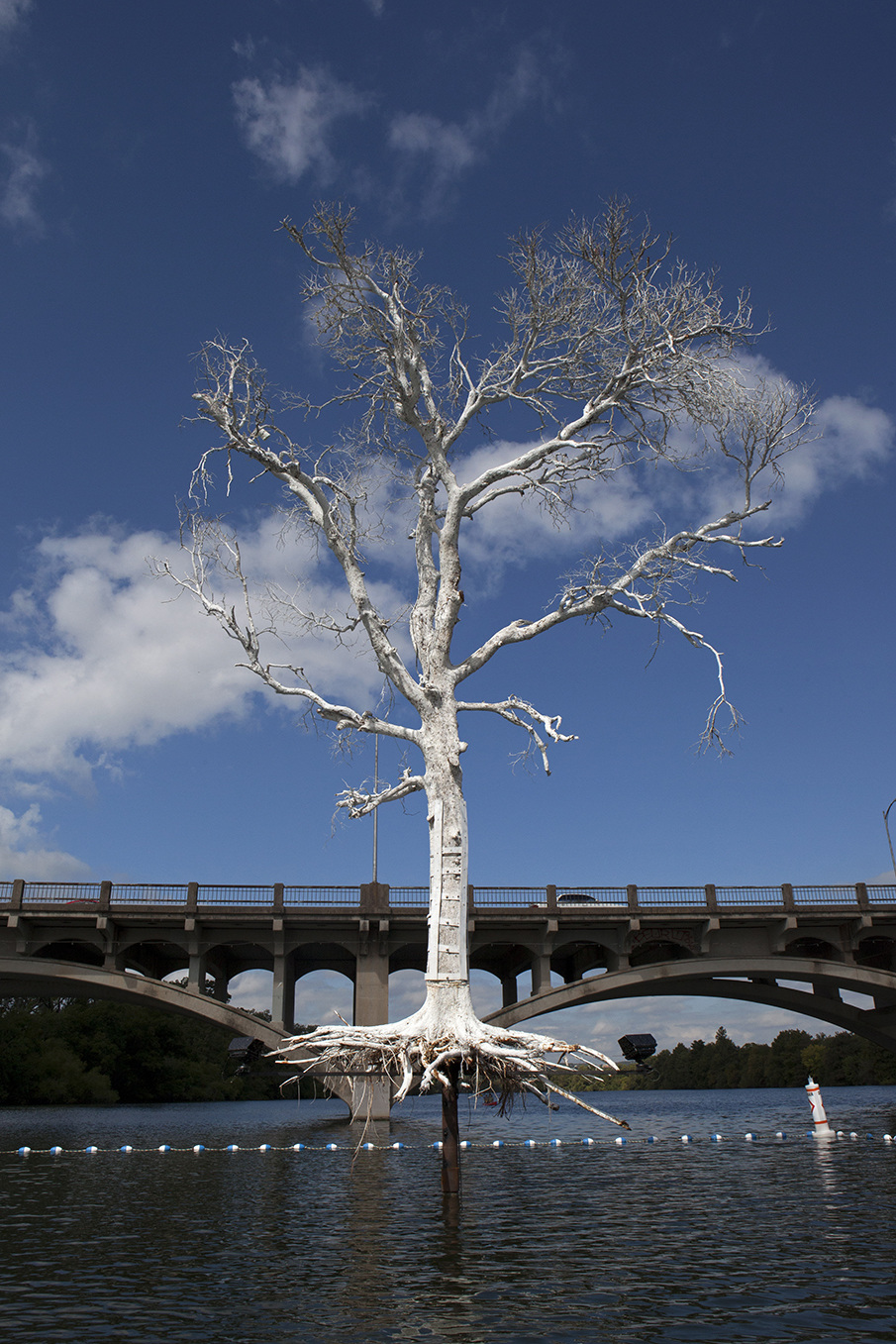
The THIRST Tree viewed from the water level.
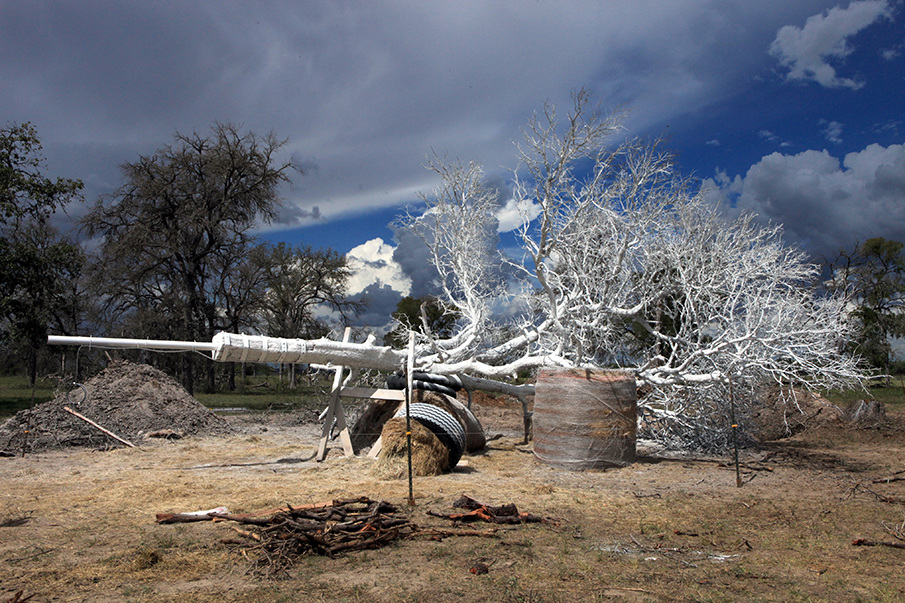
The THIRST Tree work in progress: the drought-killed Cedar Elm, a Texas native tree, is excavated and painted white.
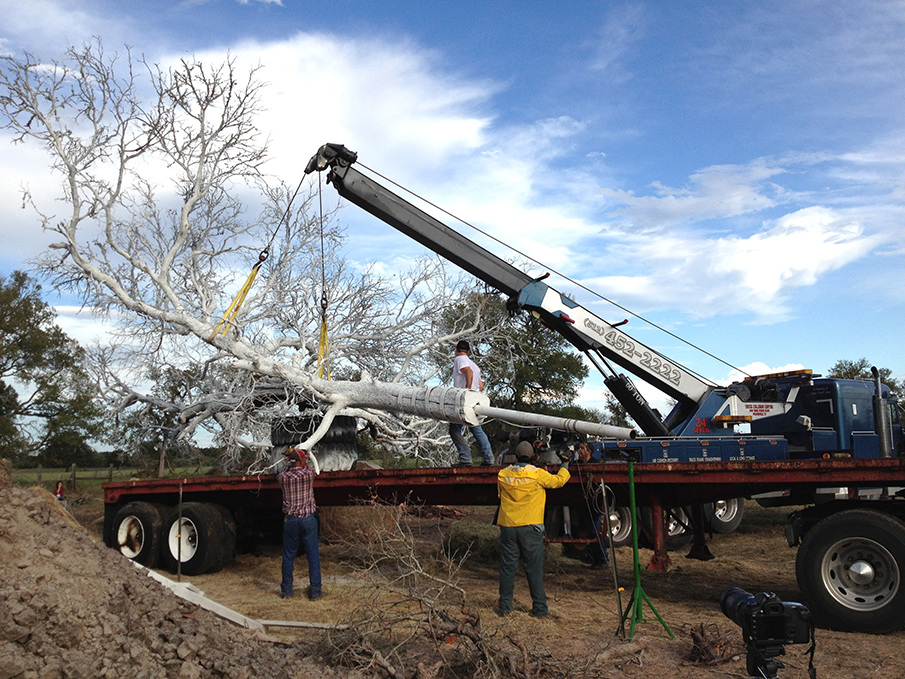
The THIRST Tree work in progress: being transported to installation site.
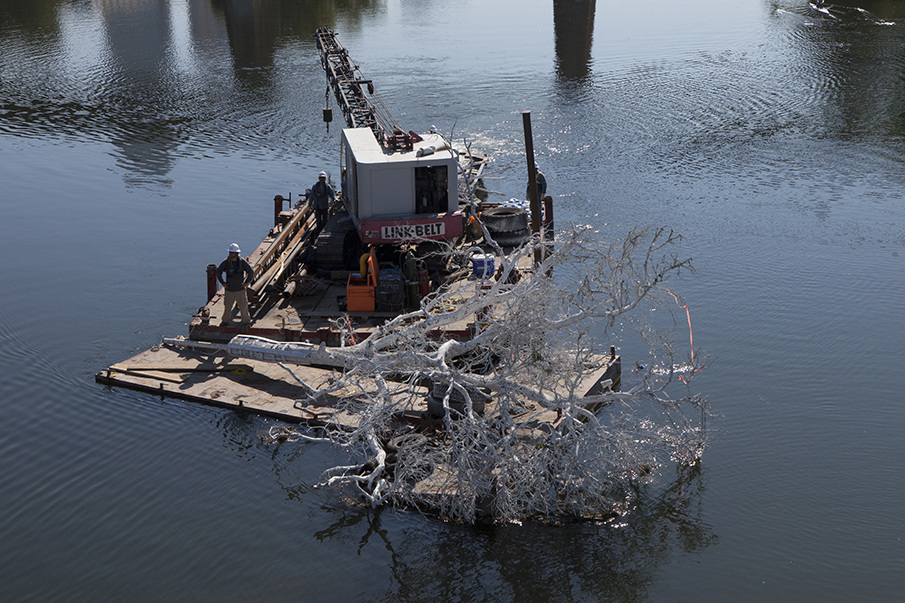
The THIRST Tree work in progress: being transported to installation site.
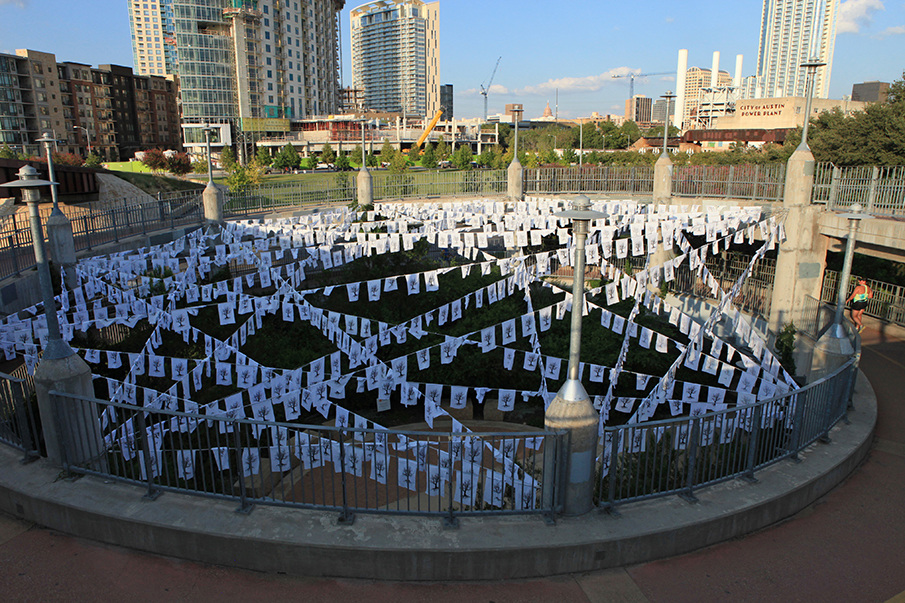
THIRST: The Prayer Flag Installation, Pfluger Circle
14,000 white cotton flags, each printed with an iconic image of a drought-killed tree surround a 2.5 mile loop around the Lady Bird Lake. A central radiating composition is seen on the left at the Pfluger Circle, noting where the begining and the ending point of the loop merge.
The Prayer Flag Installation borrows from the physical form and cultural and spiritual reference of Tibetan prayer flags, which are often found strung along mountain ridges and peaks high in the Himalayas. They are used to bless the surrounding countryside, people and their lives. The color white also signifies water in Tibetan prayer flag tradition.
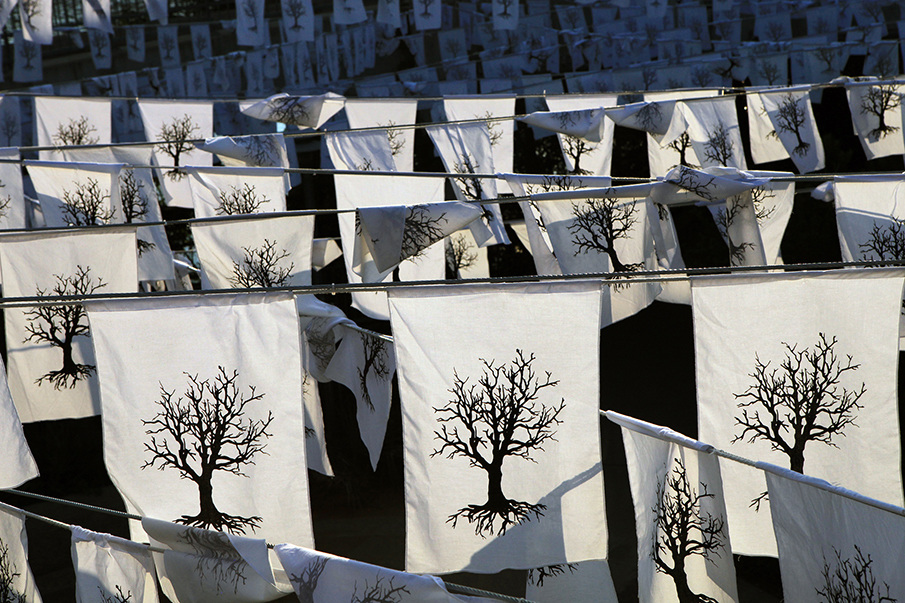
Pfluger Circle Prayer Flag Installation detail
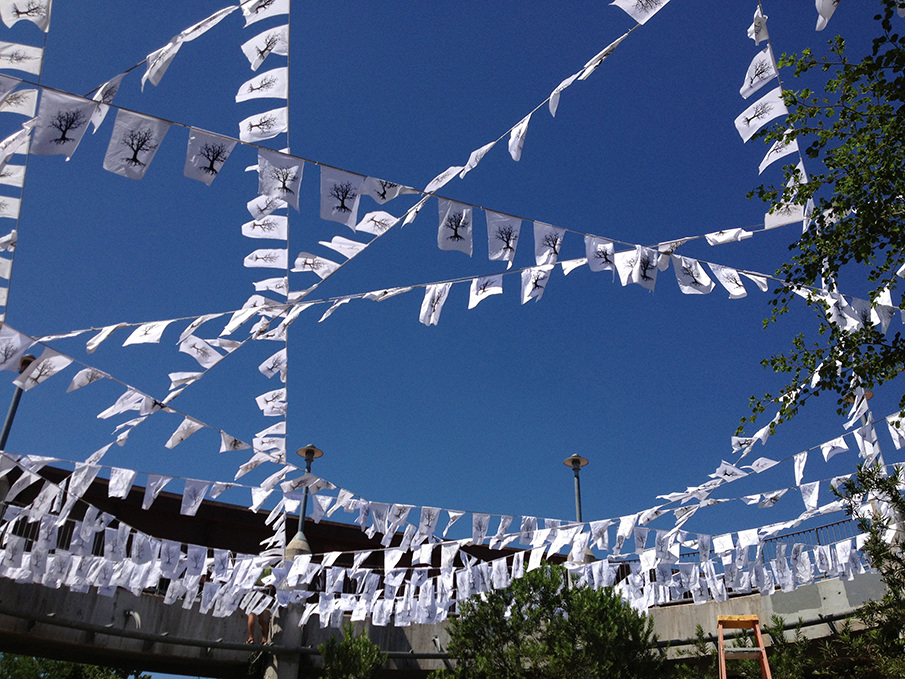
Pfluger Circle Prayer Flag Installation detail
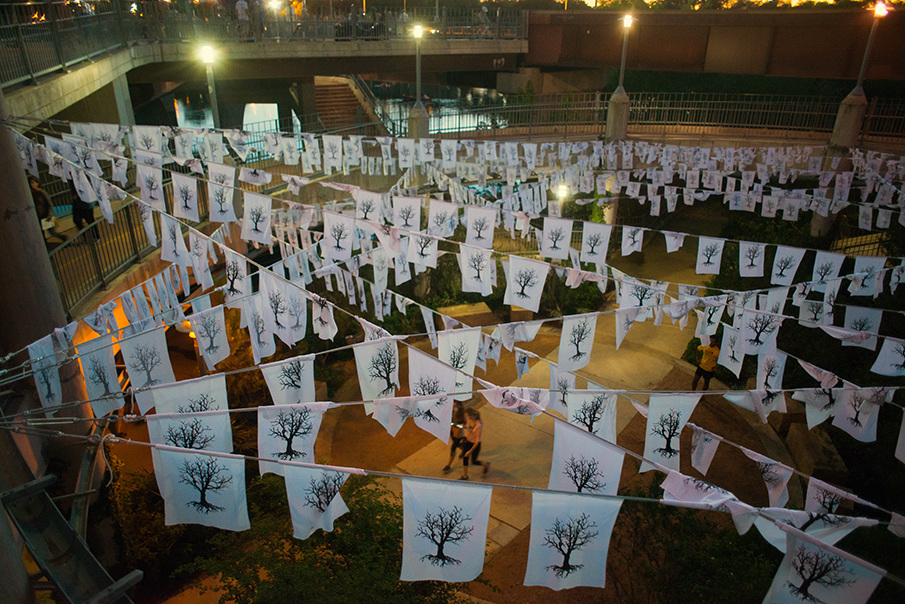
Pfluger Circle Prayer Flag Installation detail, photo by Sandy Carson
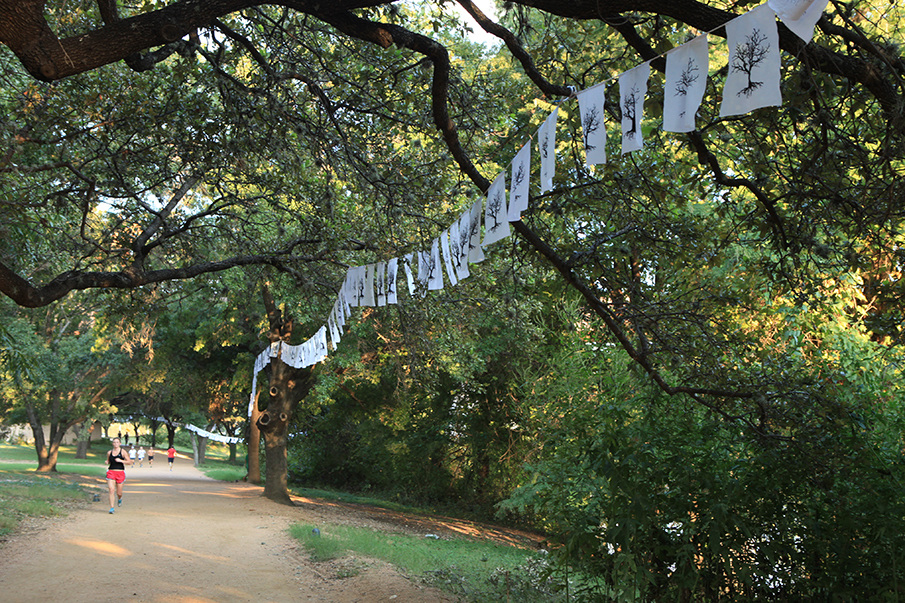
Prayer Flag installation detail on trail

Prayer Flag installation detail on Pfluger Pedestrian Bridge